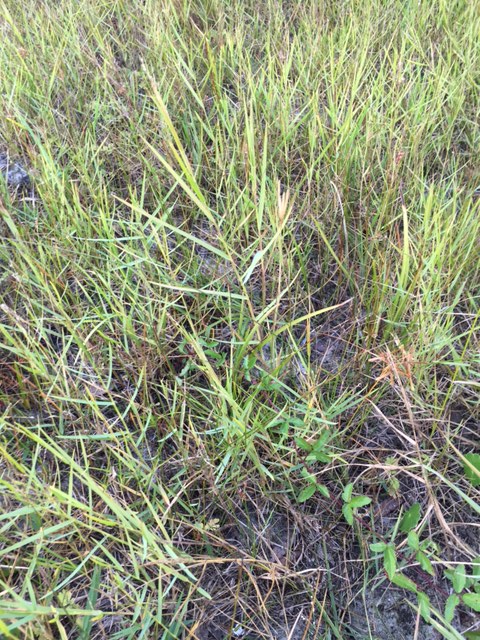
by Rick O'Connor | Feb 26, 2018

Invasive Torpedo Grass. Photo Credit: Rick O’Connor
The topic of invasive species has been with Floridians for decades. Stories of large pythons, exotic lizards, and crazy ants have been coming out of south Florida for years. Brazilian Pepper, Australian Pine, and Melaleuca are just three species of trees that have invaded the Everglades and other south Florida ecosystems.
Though we are having more problems with plants than animals, north Florida is not without their list of invasive problems. Cogongrass, Chinese Tallow, and Japanese Climbing Fern are well established and resource managers are constantly battling these and other invasives. In recent years Lionfish, Cuban Anoles, and a few sightings of Cuban Treefrogs have made their way onto our radar. All of these invasive species are causing either an environmental problem, an economic one, or both and need to be controlled. However, land and resource managers need to know what is out there to be able to do this; and the public can help.
So what can you do?
One of the most frequently used databases is www.EDDMaps.org. Land and resource managers, both public and private, can view this website to see which species are in the area, where they are located, and how common the species is. However, it is only as good as the data provided. Anyone can report an invasive species on EDDMaps.
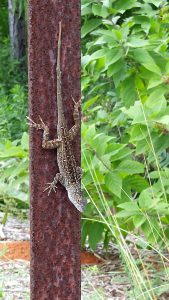
Invasive lizard – the Cuban Anole. Photo Credit; Jerry Patee.
From the home page, you can find a variety of information on invasive species. To report a sighting you will need an account. On the toolbar at the top, you will see REPORT SIGHTINGS. Clicking here will take you through a series of questions. There is some information that you need to have ready. For example, how much area of the property does the invasive plant cover? Estimates are fine but try to be as close as possible. You will also need to know your location. Most phones have a compass on them where the Latitude and Longitude are provided. However, it will need to be converted to decimal point to be posted and there is a conversion tool on the website to do this for you. It is important to report your Longitude as a negative number, or else it will think you are in the eastern hemisphere. Photos are very MUCH desired and, again, your phone photo is good enough. On the home page, you will also see how to download the app “I’ve Got One” which is a quick and easy way to report an invasive species while in the field.
If you are not familiar with many of the invasive species, you can spend some time on the website to learn more. You can also contact your local extension office to discuss species that we know are in the area and those that are nearby. These are good species to be on the watch for and, with your help, we can help keep the website updated.
The extension offices in the Pensacola area will be hosting trainings on invasive species identification and EDDMaps reporting later this year. If interested contact Rick O’Connor (850) 475-5230.
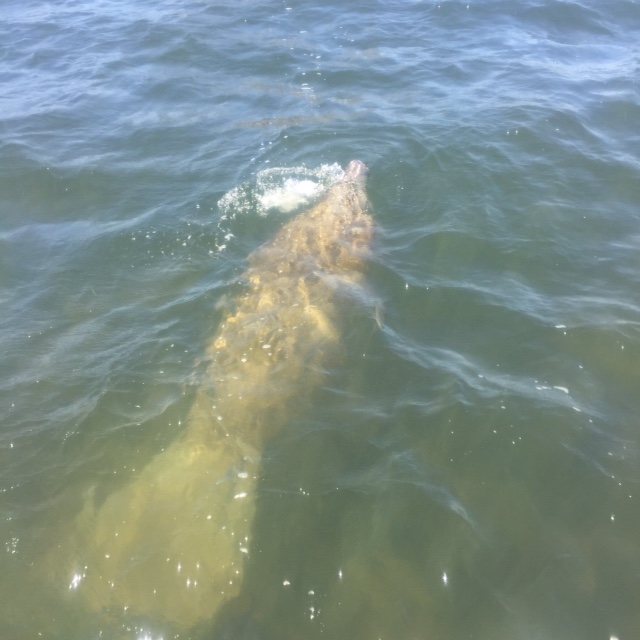
by Rick O'Connor | Feb 16, 2018
As a young boy growing up here in the panhandle, I had heard of this thing called a manatee – but had never seen one. They came more into the light when I was a teenager and becoming interested in marine biology. I was the president of the high school marine biology club and one of our goals was to raise money for a trip to Crystal River to snorkel with them. The Save the Manatee Club originated in that time trying to bring more awareness to the plight of this endangered Floridian and at one point, Jimmy Buffett had led the way.
I had learned a lot about them, found out their original range was from North Carolina south to the Caribbean and the entire Gulf of Mexico, but were now down to about 1000 animals and those were found in Florida. Eventually I did get to see manatees, and have snorkeled with them many times, but still thought of them as a south Florida animal – rarely found in the panhandle.
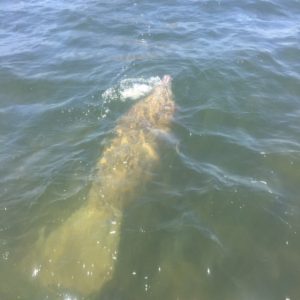
Manatee swimming in Big Lagoon near Pensacola.
Photo: Marsha Stanton
Then the recent news report – two dead manatees in the last two weeks. One washed ashore in Okaloosa county and the other in Escambia. Probably victims of the recent cold fronts. It is not unheard of finding manatees in the panhandle in recent years. I recall since the 1990’s a manatee seen in Bayou Texar in Pensacola. In another year, one was seen near Ft. Pickens. My son worked at a local marina and saw at least one a year there. There have been so many seen in the Mobile Bay area that Dauphin Island Sea Lab now has a Manatee Watch program. There are about 40 individuals that now visit Wakulla Springs. In addition, this summer there were two separate groups living in the Pensacola area. One group was residing near Gulf Breeze and a second group of about eight animals was frequently seen near Perdido Key. These once rare animals in the panhandle are now being found each year, and sometimes in groups.
What is going on?
Why are manatees beginning to visit our area?
Your first hunch would be climate change. Manatees are marine mammals but unlike their dolphin cousins their blubber layer is not as thick and they must seek warm water refuge during the winter months. When water temperatures drop below 67°F, they locate the warm water springs found in central Florida – or move south Florida where the water remains comfortable year round. If they are remaining here, could the average water temperatures have warmed enough for them to make this move?
Along this same line, mangroves are now being found in the panhandle. Both red and black mangroves have been found growing in local estuaries. In the Apalachicola area there have been quite a few located. In the western panhandle there a few individuals here and there. Further west they are found on the islands of Mississippi and have been in the Chandeleurs for many years now. Later this spring Florida Sea Grant will be conducting surveys in each county to see where these tropical trees may be growing.
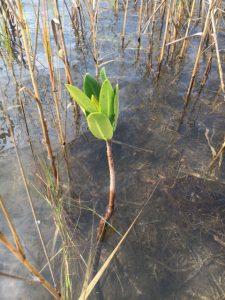
A small red mangrove growing in Big Lagoon near Pensacola FL
Photo: Rick O’Connor
And most recently are sightings of snook, a south Florida fish that have, though rare, been seen in the northern Gulf of Mexico. No doubt this Januarys hard freezes probably killed the mangroves that were here, and probably the two manatees washed ashore recently, but it will be an interesting time to see what other tropical species begin their slow migration northward. If it does happen, what will that mean? How will these changes impact local ecosystems? At this point, I am not sure if it will happen or, if it does, how fast – but it will be interesting.
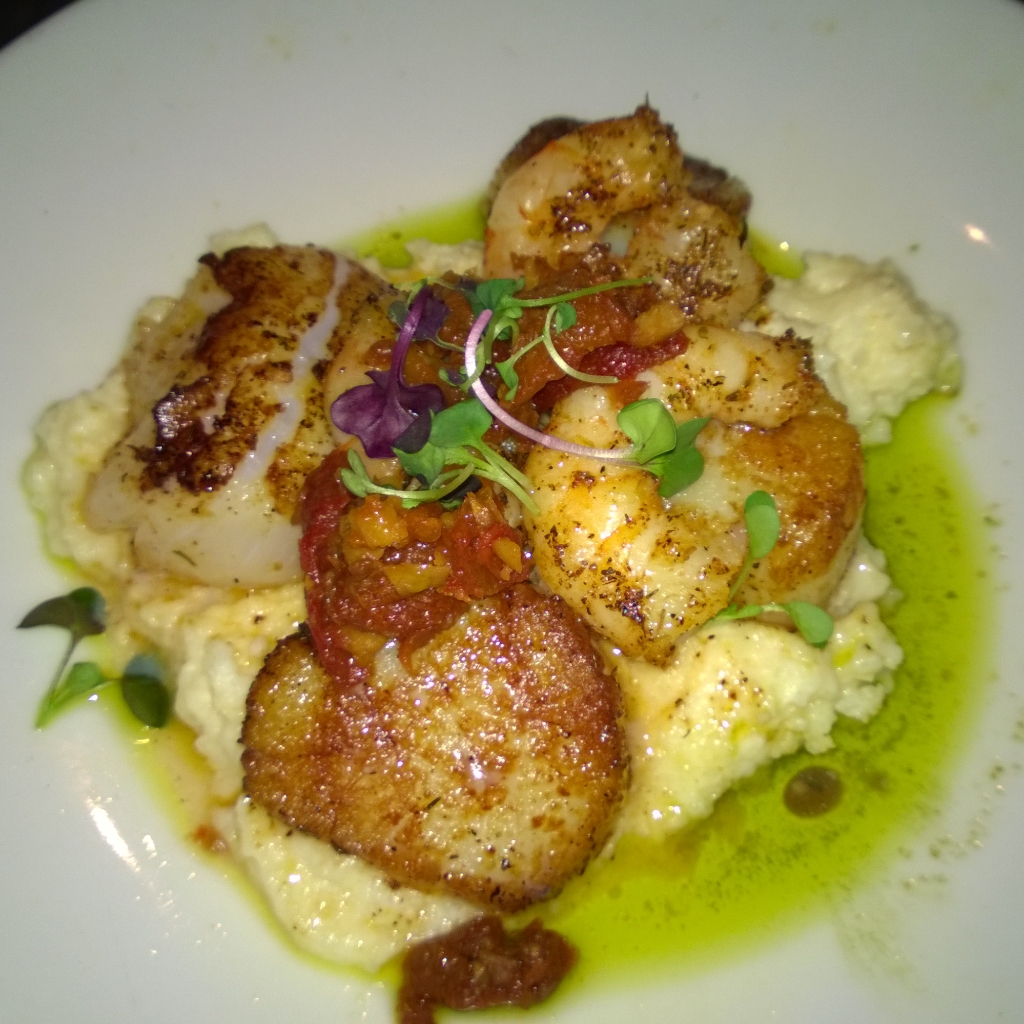
by Laura Tiu | Feb 16, 2018
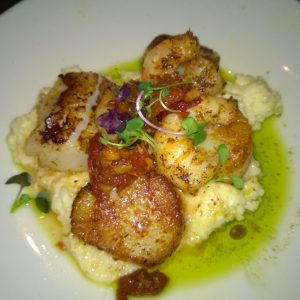
Scallops and shrimp over grits.
I have been involved in the aquaculture industry since the late 1980’s when I got my first job out of college on a tropical fish farm in Plant City, FL. As you can imagine, the industry has changed a lot since then. When folks find out I have worked in aquaculture, the same question seems to arise: “Is farm-raised fish safe to eat as wild caught?” I would like to say that I don’t understand where this question comes from, but over the years I have seen a bewildering number of mass media headlines touting misinformation about farm-raised fish and not enough touting the benefits. In fact, I saw a post this week on Facebook actually claiming that tilapia have no skin or bones and cannot be found in the wild, both not true. It is no wonder people are so confused. Many of the claims made are not research-based and a quick review of the scientific literature will disprove the statements, but who has time for that?
Aquaculture currently supplies over fifty percent of all seafood consumed and will expand in the future due to a limit on the amount of wild fish that can be sustainably harvested, and increasing demand by a growing population. Sustainable, responsible aquaculture is needed to fill that gap. Fish are farmed using a variety of production methods including ponds, raceways, recirculating land-based systems and in ocean net pens. Each one of these fish species and production methods comes with pros and cons, similar to the production of livestock and fruits and vegetables. Each species can be evaluated based on its environmental impact, production method and even country of origin.
The American Heart Foundation recommends eating fish (particularly fatty fish rich in Omega-3s) two times per week. We currently only consume about half of that. This recommendation includes a variety of farm-raised and wild-caught fish. Both are crucial to meet current and future demand for seafood and omega-3 fatty acids. A common misconception is that farmed fish is not as healthy or nutritional valuable as wild caught fish although this claim has been largely disproven. One recent paper (Trushenski et al, 2017) compared the nutritional values of wild-caught and farmed bluegill, largemouth Bass and hybrid striped bass and concluded that the farmed fish provided more long-chain polyunsaturated fatty acids (LC-PUFAs) per portion that wild fish, however both are excellent sources of high quality protein and nutrients.
With the Lenten season upon us, a time of a traditional increase in seafood consumption, what is an easy way to choose wild and farm-raised seafood? One website and smartphone app that I find easy to use is Seafood Watch (www.seafoodwatch.org). Seafood Watch uses an extensive evaluation system using research and a panel of experts to label seafood products as green (best choice), yellow (good alternative) and red (avoid) depending on the variety’s sustainability.
With this information and a little bit of homework, I hope you come to the same conclusion that I have. Both farm-raised fish and wild-caught fish are delicious, nutritious and great additions to your diet.

Baked tilapia, rice and vegetable medley.
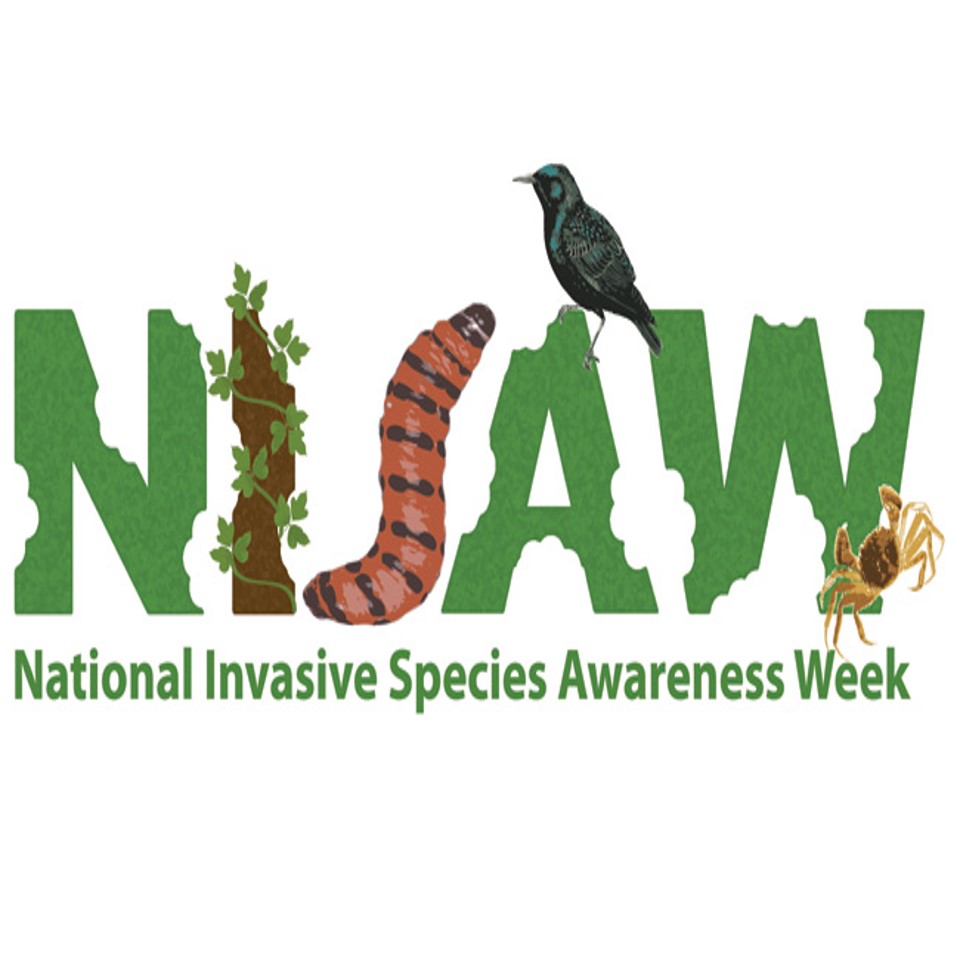
by Jennifer Bearden | Feb 2, 2018
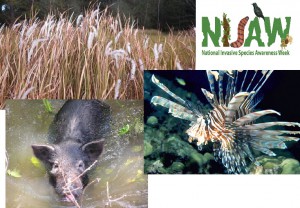 Aliens are invading our forests, pastures, fields and lawns. Well, okay, it’s not aliens but it is invasive species. Invasive species are non-native or exotic species that do not naturally occur in an area, cause economic or environmental harm, or negatively impact human health. These invasive species have become the number one threat to biodiversity on protected lands. However, invasive species do not know boundaries, and as a result, public, private lands, natural and man-made water bodies, and associated watersheds are affected. National Invasive Species Awareness Week (NISAW) is February 26-March 2, 2018.
Aliens are invading our forests, pastures, fields and lawns. Well, okay, it’s not aliens but it is invasive species. Invasive species are non-native or exotic species that do not naturally occur in an area, cause economic or environmental harm, or negatively impact human health. These invasive species have become the number one threat to biodiversity on protected lands. However, invasive species do not know boundaries, and as a result, public, private lands, natural and man-made water bodies, and associated watersheds are affected. National Invasive Species Awareness Week (NISAW) is February 26-March 2, 2018.
It is estimated that Florida Agriculture loses $179 million annually from invasive pests (http://www.defenders.org/sites/default/files/publications/florida.pdf). Generally, eradication of an invasive species is difficult and expensive. Most of the mitigation efforts focus on control rather than eradication.
EDDMaps (Early Detection and Distribution Mapping System), a web-based mapping system for reporting invasive species, currently has 667 different invasive plants reported in Florida. Many invasive insects, animals and diseases have also landed in Florida. Some famous invasive species in Florida include cogongrass, wild hogs, red imported fire ants, Chinese tallow, and lionfish.
For National Invasive Species Awareness Week, the University of Florida IFAS Northwest Extension District will highlight new invasive species each day. There are a couple of ways to receive this information during NISAW:
You can help us control invasive species in several ways:
- Always be cautious when bringing plants or plant materials into the state. Plants or even dead plant material can harbor weeds, insects and diseases that can become invasive in our state.
- When you see something suspicious, contact your local extension agent for help identifying the weed, insect or disease.
- You can volunteer your time and effort. Invasive species control is difficult and requires a cooperative effort for funding and manpower. The state has several Cooperative Invasive Species Management Areas (CISMA) in which public and private organizations work together to control invasive species in their area. These CISMAs hold work days in which volunteers can help remove invasive species from the environment. https://www.floridainvasives.org/cismas.cfm
For more information about NISAW or invasive species, contact your local county extension agent.
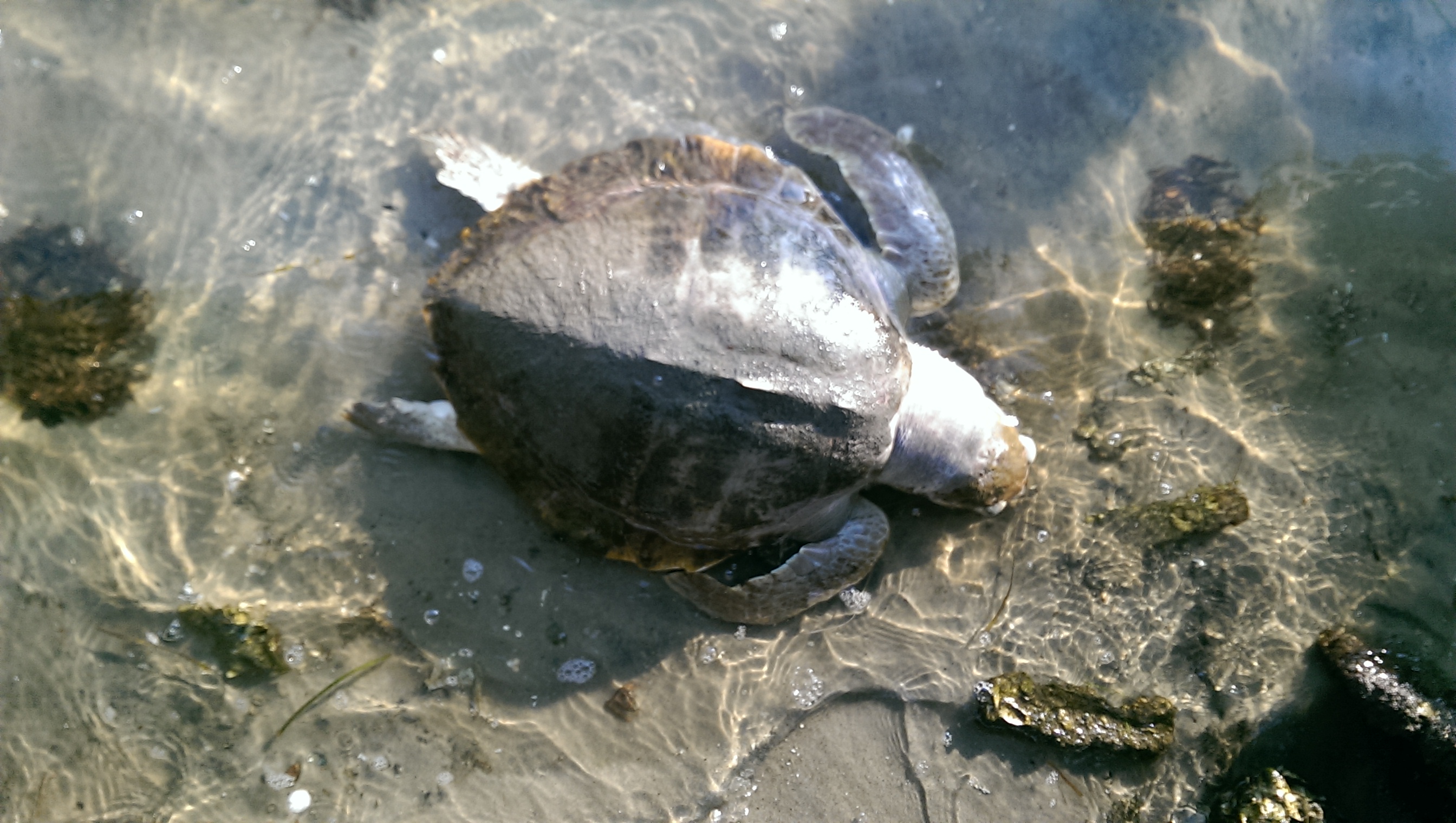
by Rick O'Connor | Feb 2, 2018
Man what a winter!
Between multiple days below freezing, tough traveling, and the flu it has been a brutal winter season so far.
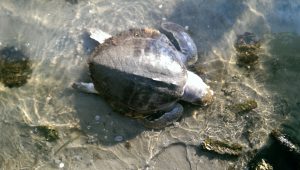
Dead Kemps Ridley Sea Turtle washed ashore in Little Sabine near Pensacola Beach. This turtle died of ingesting monofilament fishing line.
Photo: Betsy Walker
It is not that different for some of our marine wildlife friends. The low temperatures have driven marine water temperatures down as well, particularly in the shallow areas. There have been many reports of cold stunned sea turtles up and down the Florida panhandle – over 900 of them. There have been reports of cold stunned iguanas falling from trees and the loss of pythons in south Florida. The question sometimes comes up – “how do they deal with this apparent return from the dead?”
One has to remember we are dealing with reptiles – cold-blooded creatures. Actually, the more correct term is poikilothermic. It really does not pertain to the temperature of their blood but their core body temperature in general. Some animals, like humans, can maintain a constant body temperature, like 98.6°F, no matter what the environmental temperatures are – these are referred to as homotherms. Heterotherms can allow their body temperatures fluctuate within a range – but are in control of their body temperatures. The poikilotherms cannot control their body temperature and are thus at the mercy of the environment – the classic “cold blood”. Some of these poikilotherms have been known to actually freeze and thaw – with no observable problems, not so much for our “warm blooded” friends.
So what’s up with the cold-stunned situation?
Well… even with the “cold bloods”, extreme temperature changes can be very stressful. Some respond by changing their behavior, others their physiology, others both. They will alter their feeding – basically stop. In some, the pH and ion balance within their blood becomes unbalanced, which can trigger the feeding reduction response and increase ion exchange within the lungs. The partial pressure within the venous blood can decrease and this, along with the chemical imbalance and feeding reduction, can trigger a “lethargic” response and even a “floating” response in the marine turtles.
Locally, it seems to be the sea turtles who are having the most problems. In south Florida, scientists have noticed the American Crocodile and the invasive pythons struggle with these cold temperatures but the wider ranged American Alligator and numerous species of native snakes do not. The “locals” seem to alter their behavior to adjust for these extreme temperature drops – a method that the tropical species are not practicing. It is known that certain native freshwater turtles over winter in frozen ponds, and diamondback terrapins are known to “hunker down” in muddy bottoms of salt marsh creeks when water temperatures drop below 59°F.
With sea turtles, the larger migratory individuals offshore are still moving at 43°F but is the smaller inshore juveniles that are the subject of stunning events. The water temperatures change more rapidly in shallower water and at 43°F, these smaller sea turtles become lethargic and float – which increases their chance of predation. Data suggest that Green Sea Turtles begin to slow activity and Kemps Ridleys become more agitated when water temperatures drop below 68°F, both become dormant, reduce feeding and breathing when they drop below 59°F. It is believed the real problems from being cold stunned are from the reduction of food as much, if not more than, the actual temperature itself. The “cold bloods” bask to increase their body temperatures so that they can actually digest their food.
It is a problem frequently encountered along the American east coast but not as much in Florida. However, this year has been different. The staff and volunteers from government agencies and local aquaria have done a champion job rescuing and rehabilitating many of these animals.
References
Mazzotti, F. J., M. S. Cherkiss, M. Parry, J. Beauchamp, M. Rochford, B. Smith, K. Hart, and L. A. Brandt. 2016. Large reptiles and cold temperatures: do extreme cold spells set distributional limits for tropical reptiles in Florida? Ecosphere 7(8):e01439. 10.1002/ecs2.1439
Moon D.Y., D.S. MacKenzie, D.W. Owens. 1997. Simulated Hibernation of Sea Turtles in the Laboratory: I. Feeding, Breathing Frequency, Blood PH, and Blood Gases. The Journal of Experimental Zoology. 278: pp. 362-380.
Milton, S.A., P.L. Lutz. 2003. The Biology of Sea Turtles, Volume II. Edited P.L. Lutz, J.A. Musick, J. Wyneken. CRC Press. Pp. 510.













